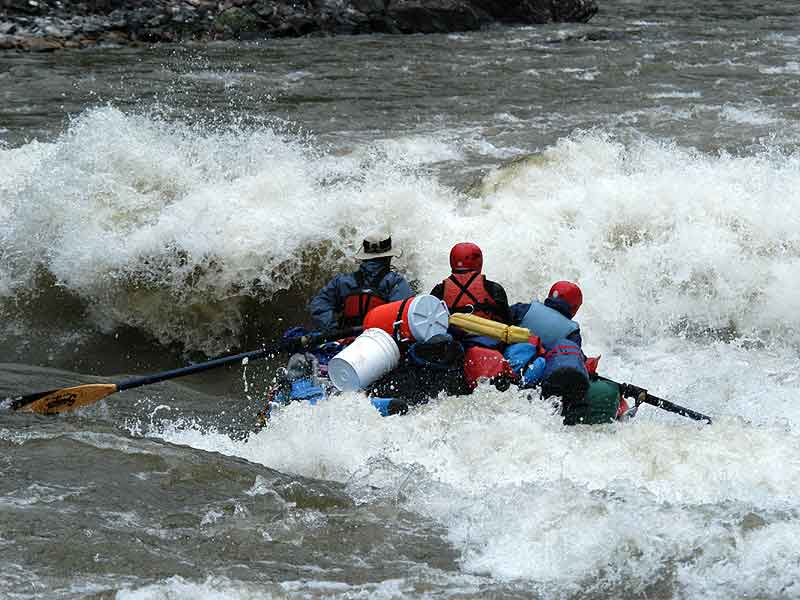The Middle Fork Of The Salmon
The single finest river I have ever experienced!
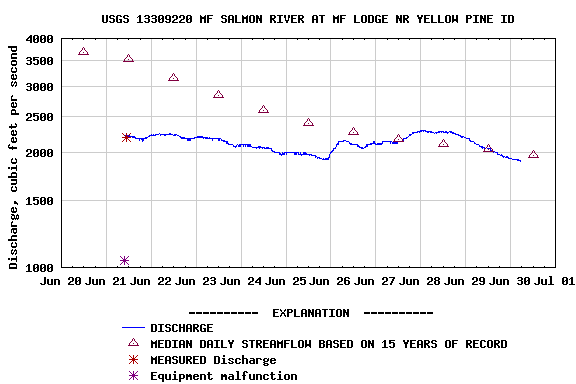
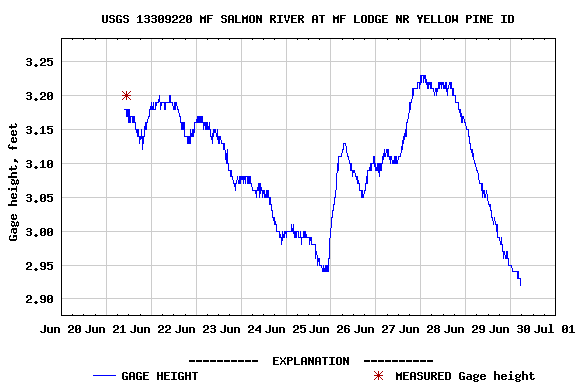
Below: Boundary Creek Put In Ramp. This ramp is the only way to launch your boat.
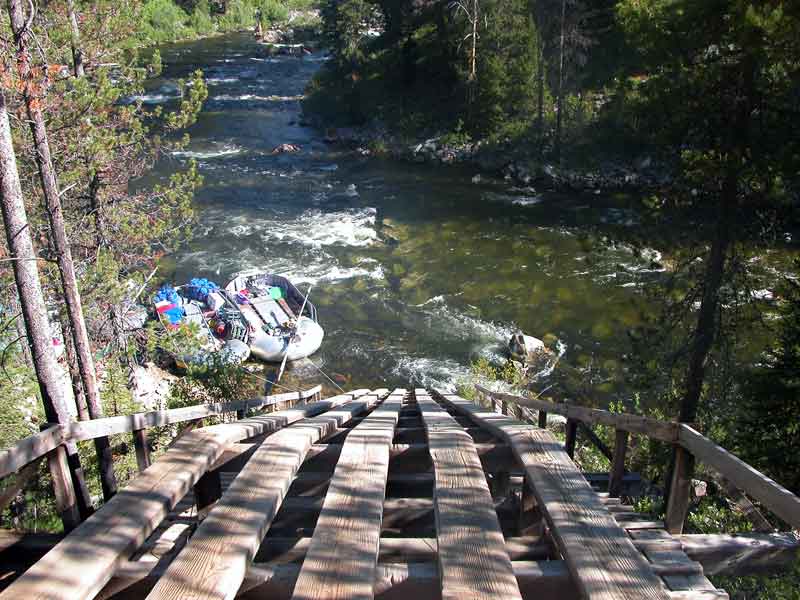
Below: Boundary Creek Put In Ramp. A view from the side. Notice at the very end, the ramp becomes even steeper.
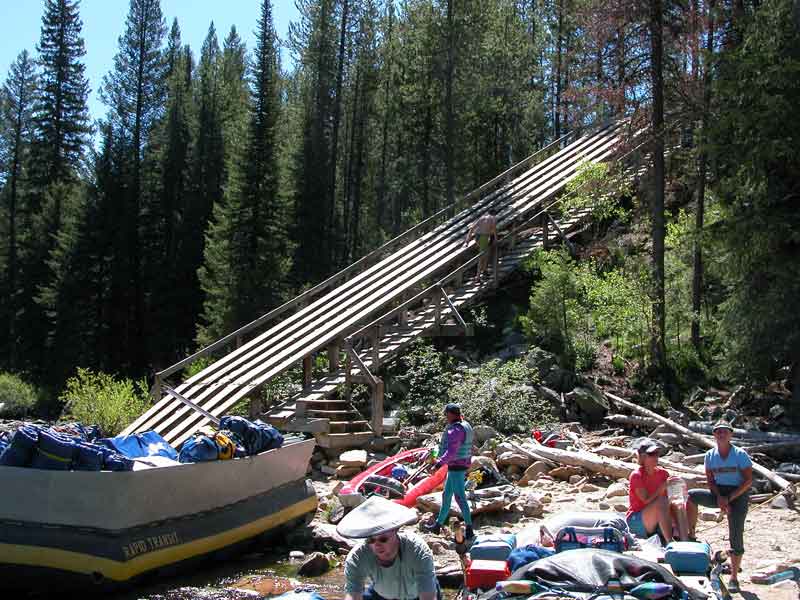
Below: The Ramp. Typically six to eight people launch each boat. It is common to have one person behind with a rope and a belay just in case the boat decides to travel faster than you did.
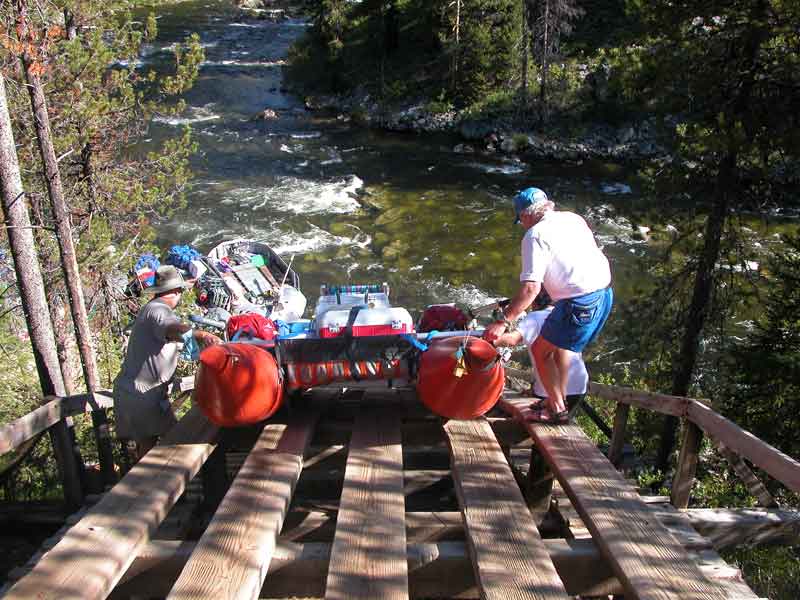
Below: The Ramp. Once in the water, the oarsman must get the boat over into the eddy before being swept downstream. The first rapid, First Bend Rapid II+, awaits in the background. The first five miles are like being shot out of a gun. The rapids are almost continuous over that distance and at miles 5.1, one of the most dangerous rapids awaits. The next 20 miles are only slightly less continuous, although the river channel does widen a little and the flow increases quickly.
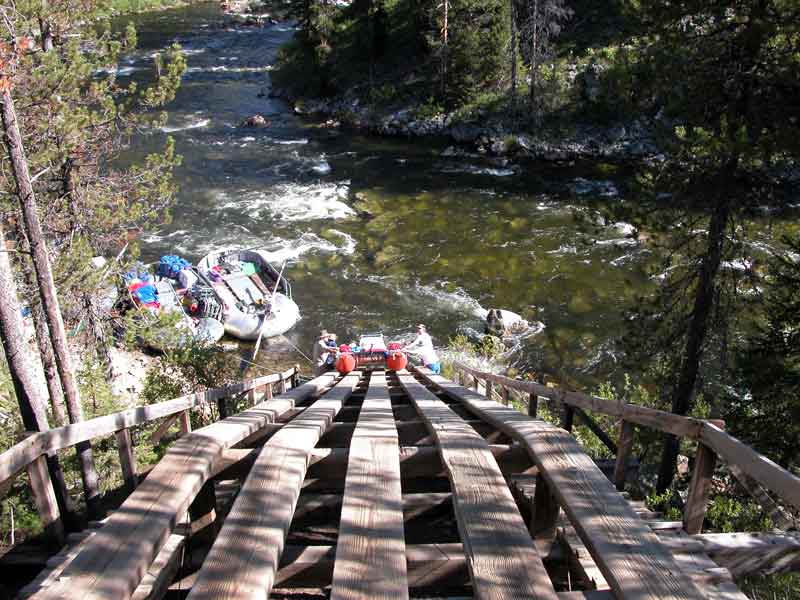
Below: Dave at the base of Velvet Falls at mile 5.1.
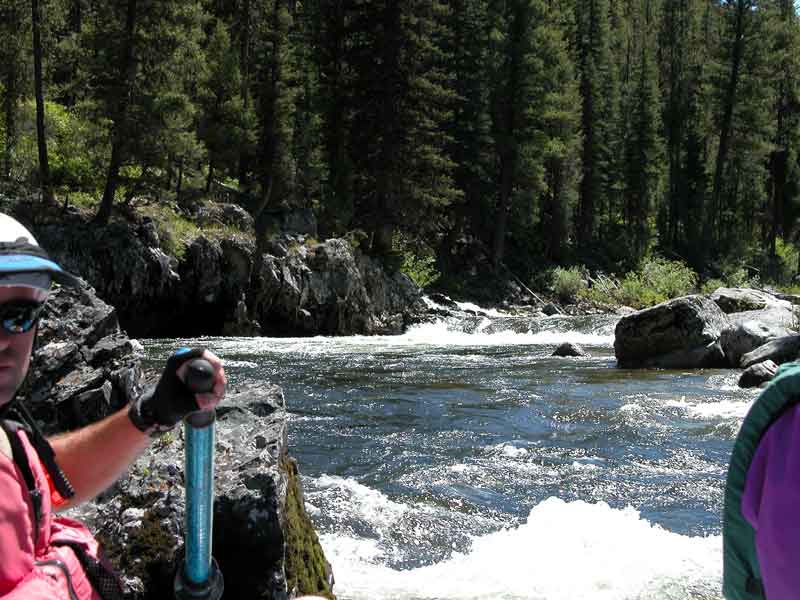
Below: Velvet Falls, mile marker 5.1. At higher levels this rapid is a killer. There is a strong re circulating flow created as the river flows over a river wide ledge that creates a monster hydraulic. The boil line for this monster is about eight feet away from the crease, making for a very difficult rescue. This is a primary consideration when assessing if a boater has the requisite skills to row this river. At this level, roughly 3.2 on the gauge, the rapid is not as deadly, however, you can still be easily killed by this class IV- rapid.
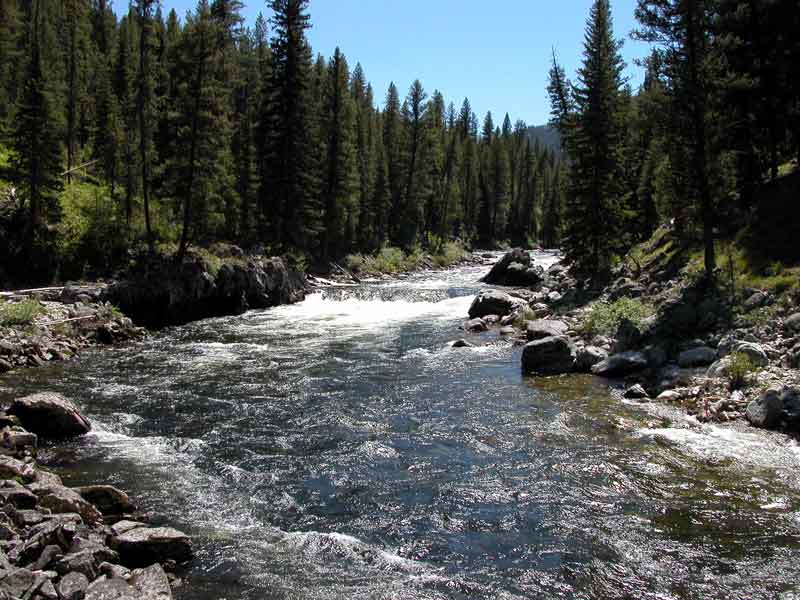
Below: Velvet Falls. A closer look at the river wide ledge that creates this powerful hydraulic.
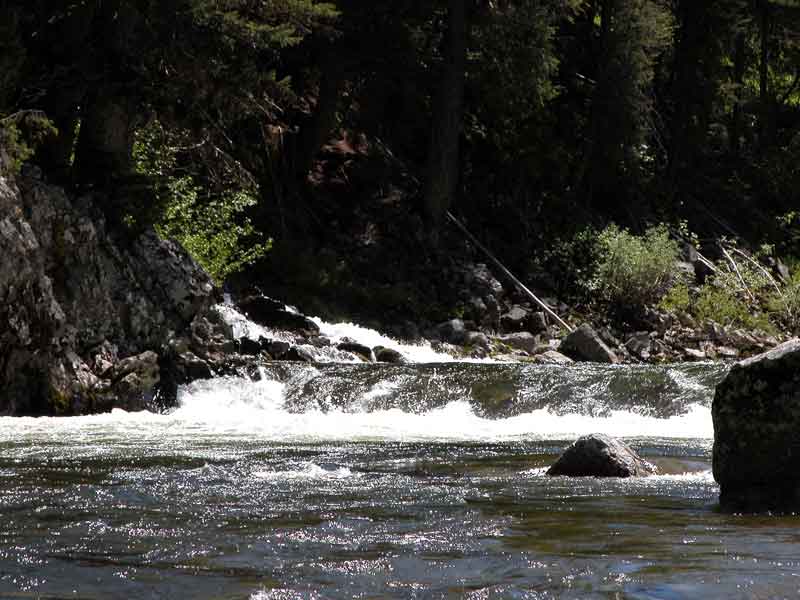
Below: Velvet Falls from above. Notice Velvet Creek joining with the river on river right. Also notice this photo was taken at a time of lower water. The rock on river left is submerged in the other photos. Lower water levels can lessen the effects of this powerful hydraulic. There are a series of smaller rapids immediately above this one that muffle the sound of this rapid. This means you may not know you are above this serious rapid until it is too late. The following scenes are of three boats that attempt to run this rapid.
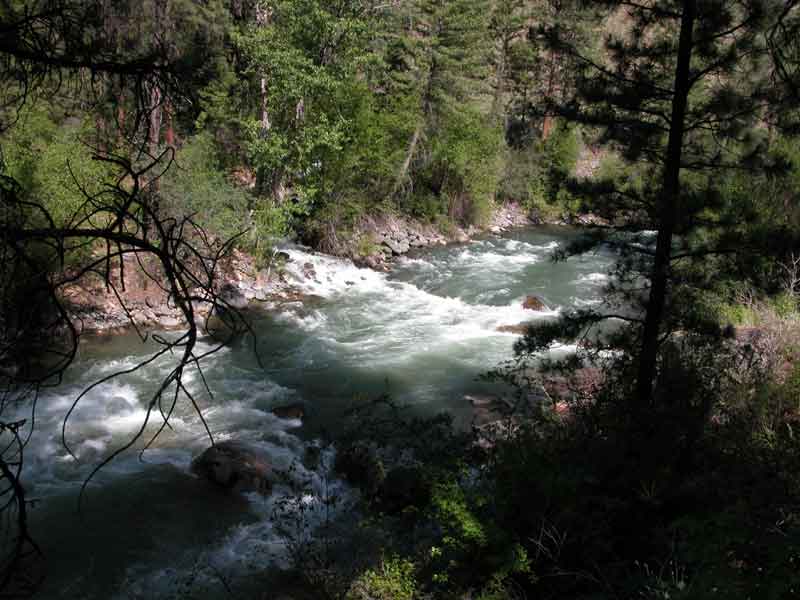
Below: Dan sets up . A boater must arrive at this rapid directly on top of it. Once the boater has cleared the house rock on river left, he can slide over to the far left. This is the typical route for running this rapid. The hydraulic is broken at the left side and you can safely pass beyond this rapid.
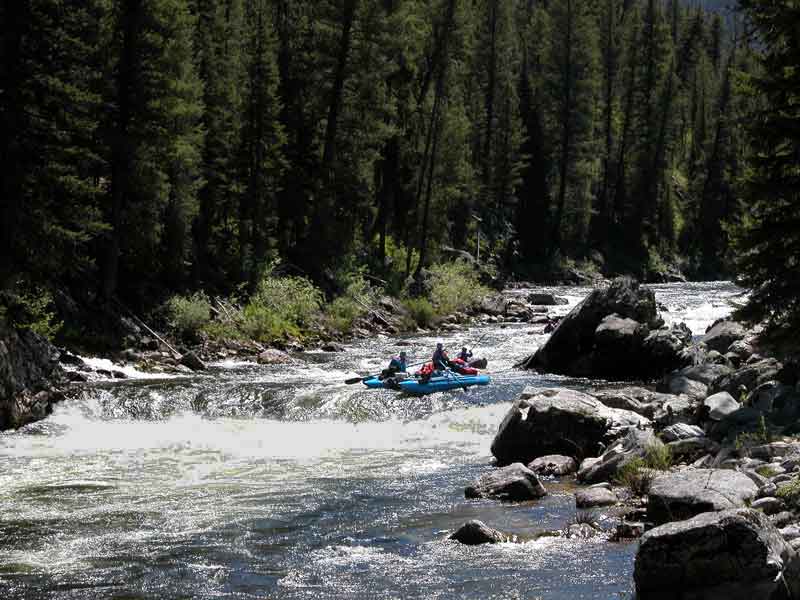
Below: Dan plunges down the staircase into the flush below.The boil line extends almost to the right hull of the boat and can suck a hull into the hydraulic, taking you with it. So a boater must push through this section if they are to avoid being sucked back into the crease of the hydraulic.
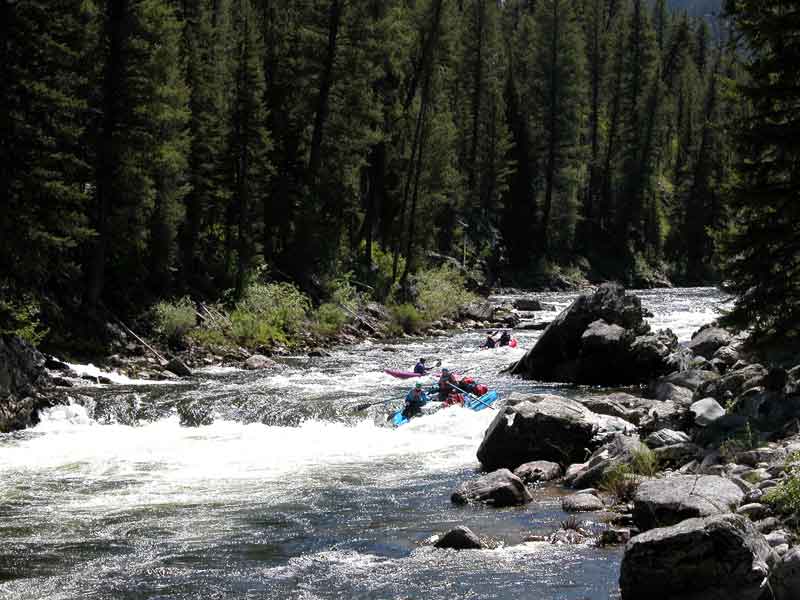
Below: Now Molly lines up in her little duckie to run the same line. Punching through the wash below is especially important for double inflatables or duckies as they are called. Notice the red boat above. These boaters are not aware they are directly above this killer rapid and they are also unaware of the moves of the previous boaters.
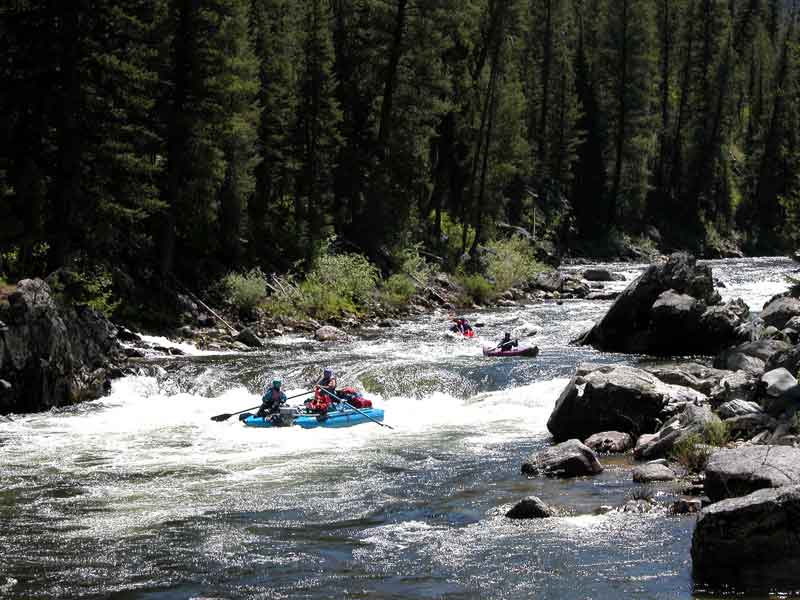
Below: Molly and her nerves of steel line up correctly as she prepares to enter the rapid. The red boat drifts ever closer to the hydraulic.
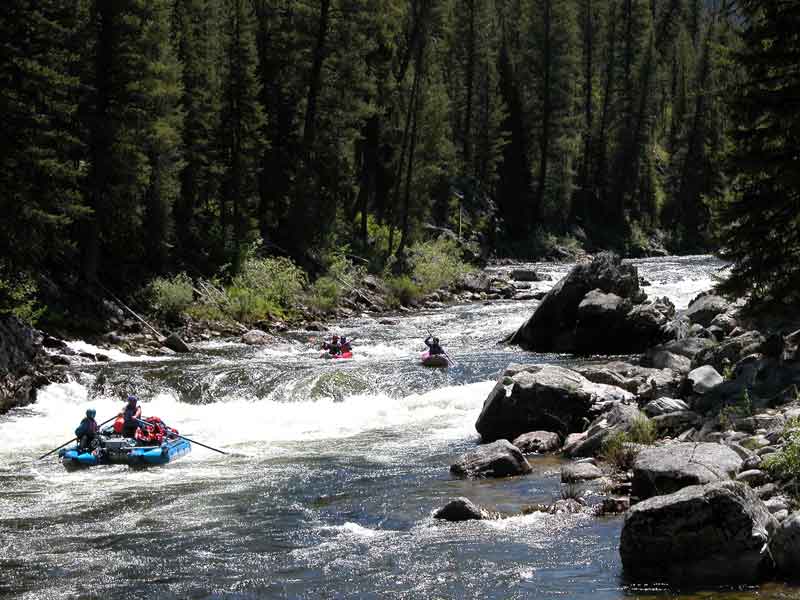
Below: Directly above this rapid the flow is slower. There is some opportunity to maneuver above it but the consequences are very steep if you miss. The red boat is now committed to running the hydraulic. At this point the boaters are probably aware something is horribly wrong.
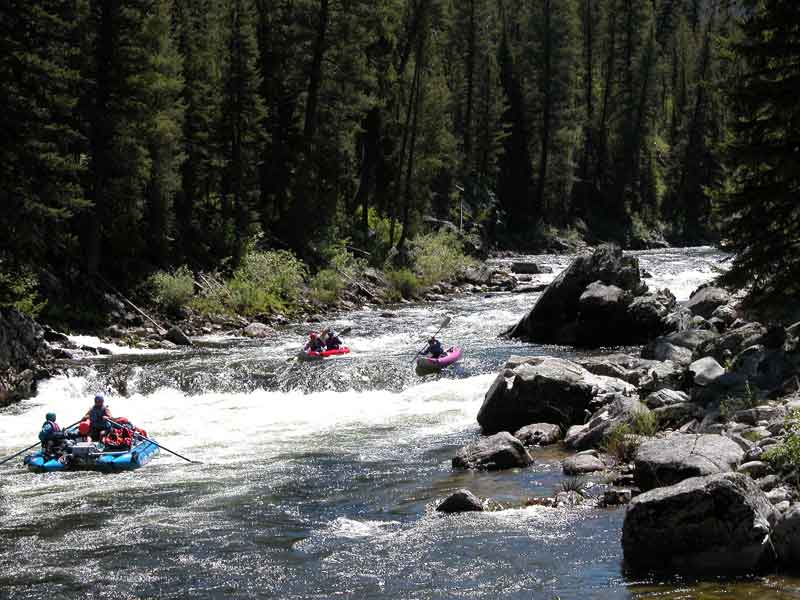
Below: Near disaster at Velvet Falls. Moments before this shot was taken these boaters hit the wash but failed to punch through it and stalled. They entered the water at the crease. This time the river gave them back!
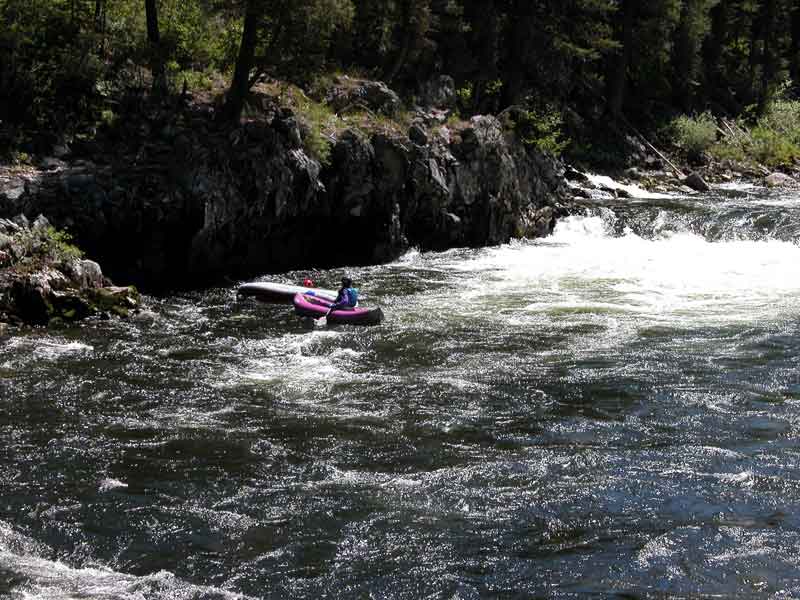
Below: Lets go swimming. These lucky boaters are collected at the foot of the rapid. This boater has already flushed through the rapid and has negotiated the much smaller rapids below. The other boater self rescued by climbing to shore and collected himself.
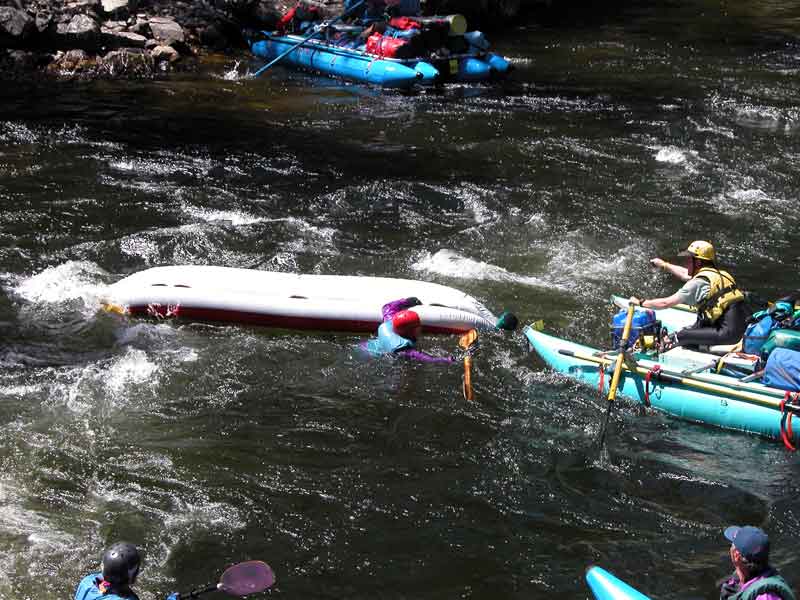
Below: This is exactly what you do not want to see at the base of this rapid. This time everyone came out intact.
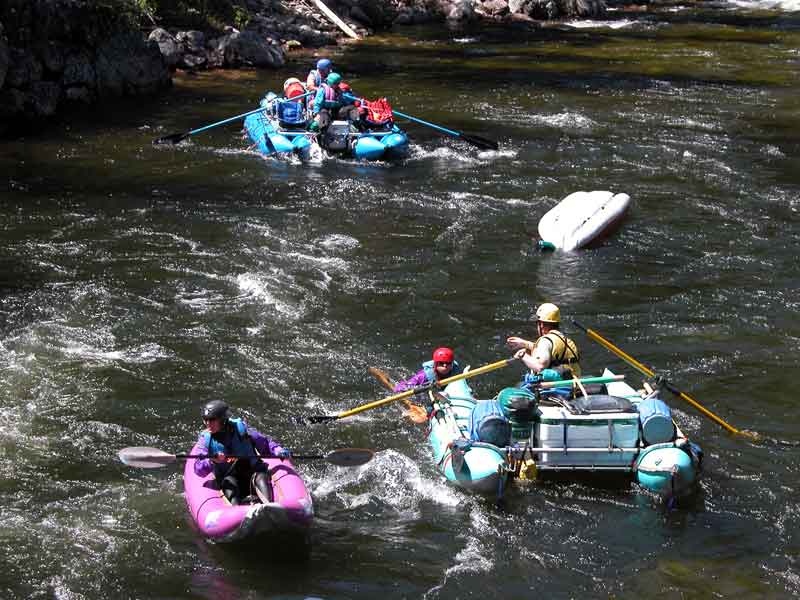
Below: A deer visits camp the first night.

Below: Grouse trying to distract us from finding her babies. What a good mother.
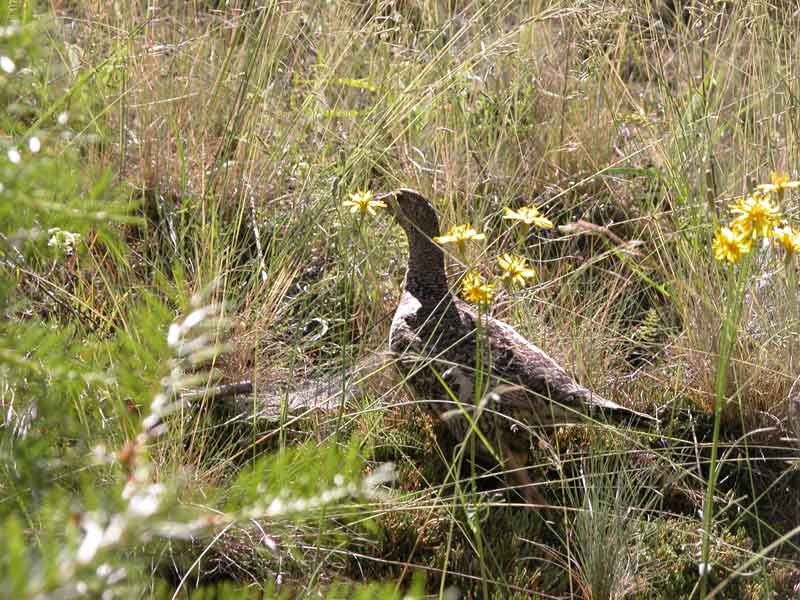
Below: Fred got his big toes painted yellow. Why yellow?
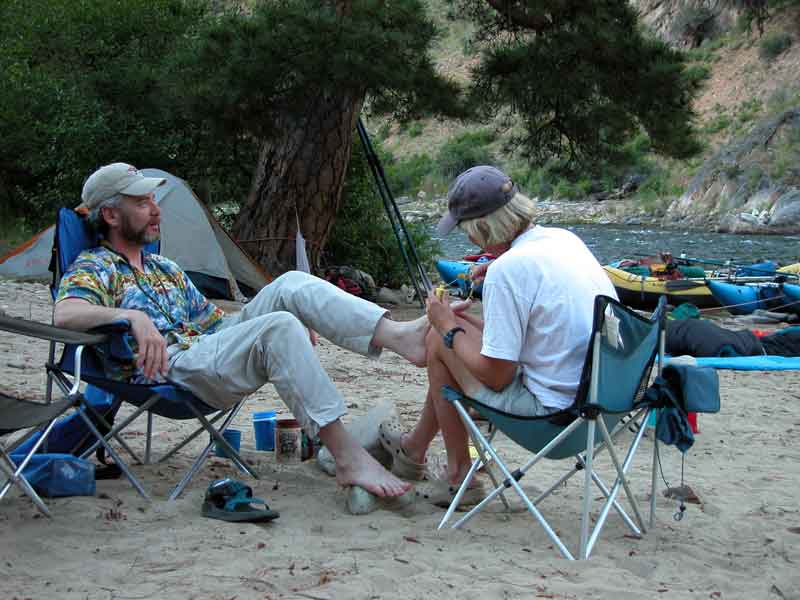
Below: A strong caddis fly hatch begins. This river had one of the largest blizzard caddis hatches I have ever seen. Fortunately caddis flies do not bother people at all. They are a friendly bug that does not bite or sting. And trout love them.

Below: This picture might seem a little washed out. But actually there are a hell of a lot of flies coming right off the river. This hatch lasted over four hours and the next day started before lunch and lasted deep into the evening.
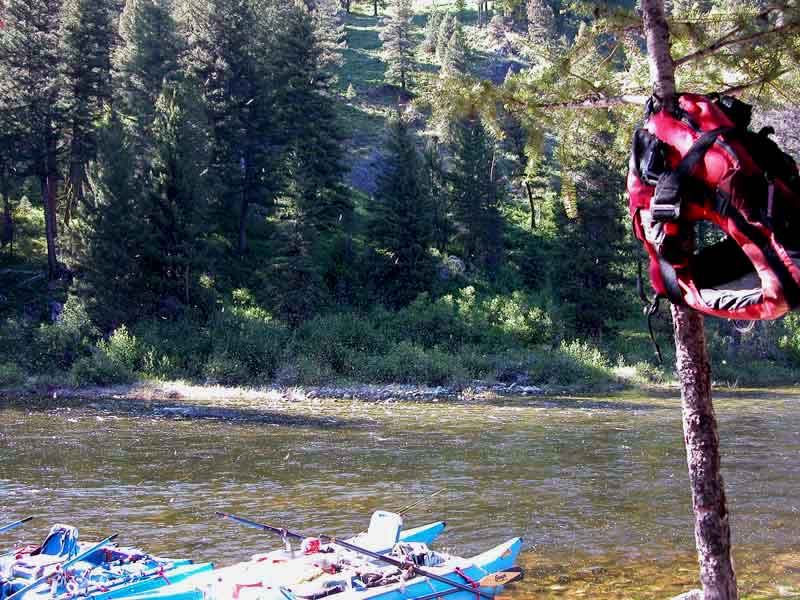
Below: Evening at camp one.
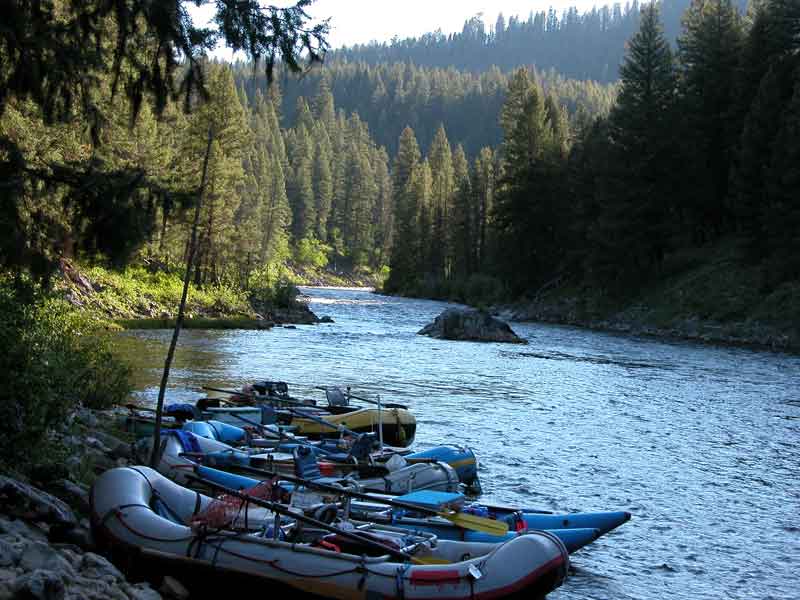
Below: Morning at camp one.
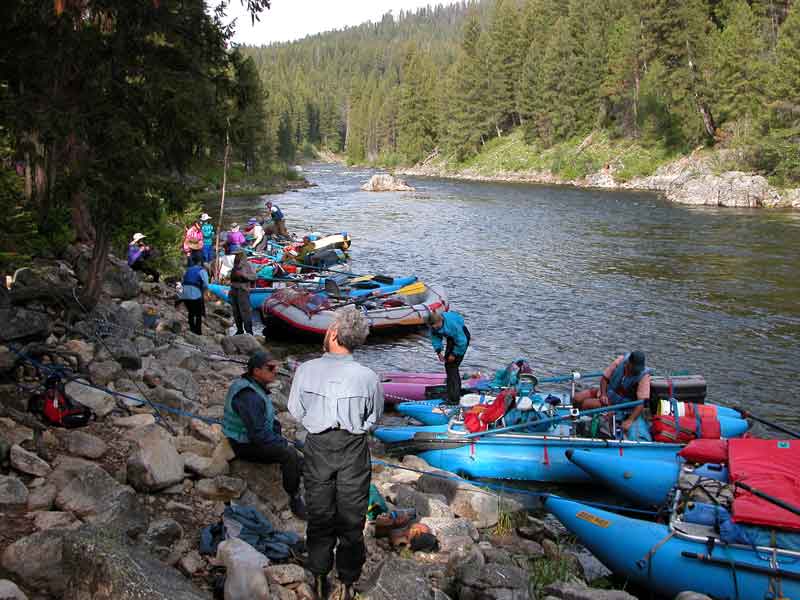
Below: Pistol Creek Rapid entry, class III.

Below: Pistol Creek Rapid entry. The hole on river left could flip or disorient you, but it is easy to miss.
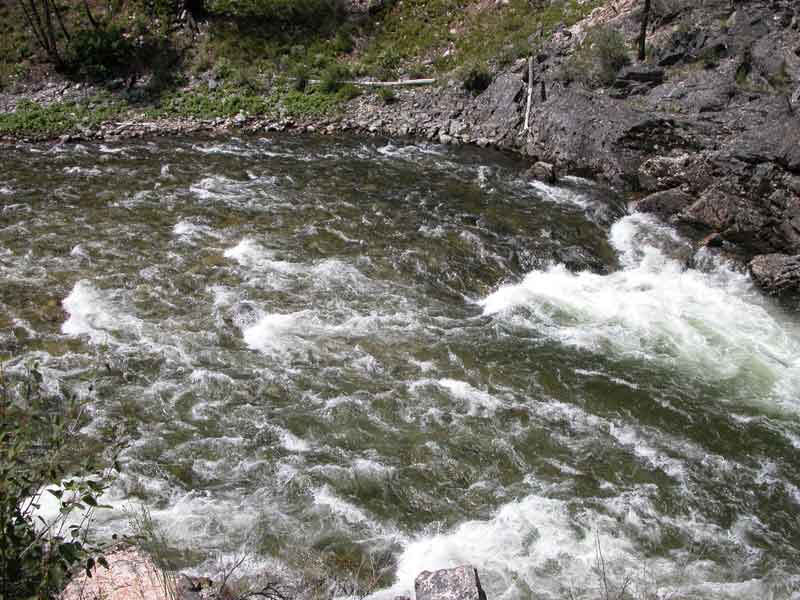
Below: Pistol Creek Rapid. Dave does the mid-section.
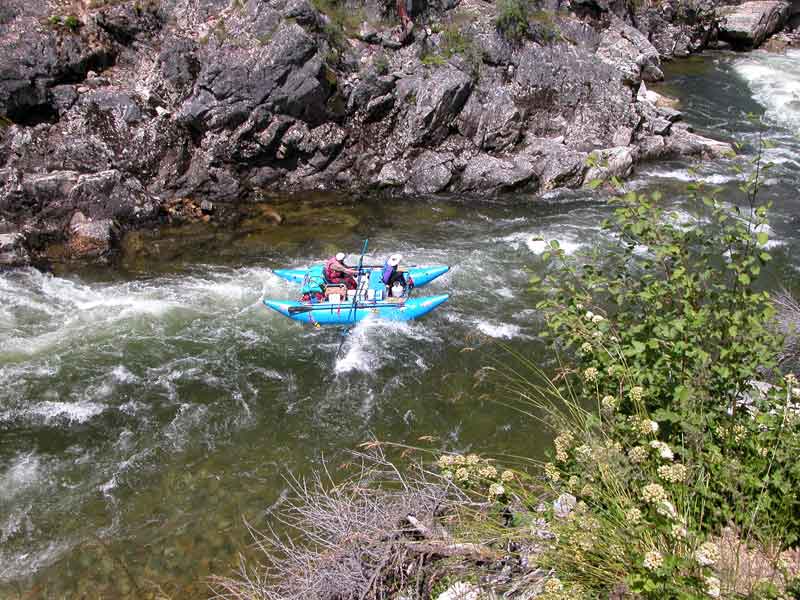
Below: Pistol Creek Rapid exit, picture taken from the scout position.
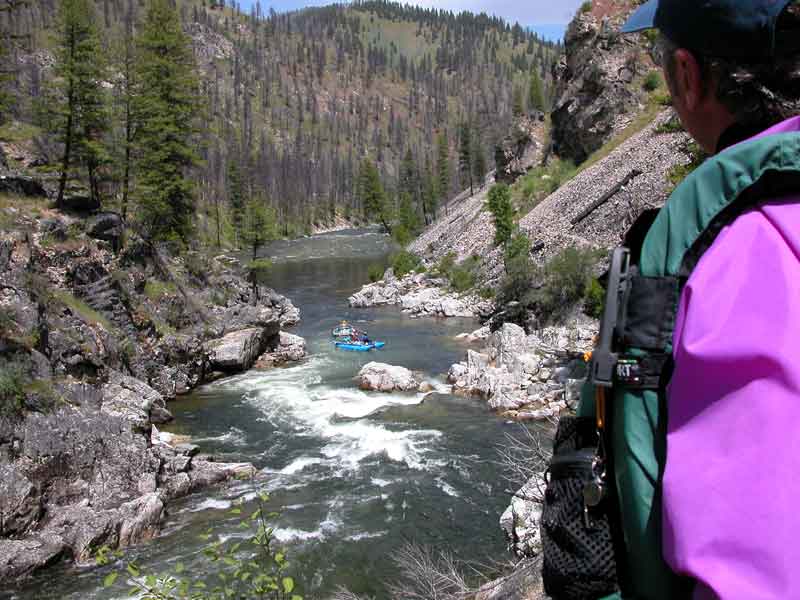
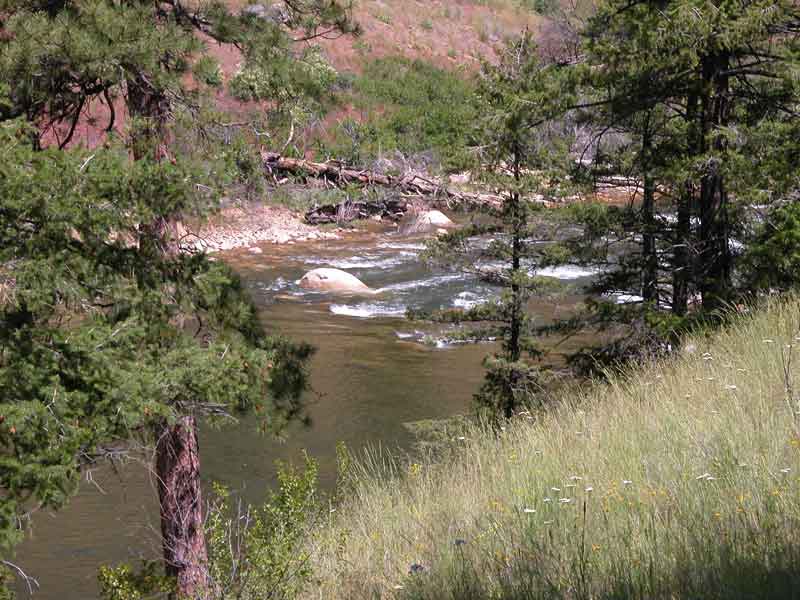
Below: A large sandbar.
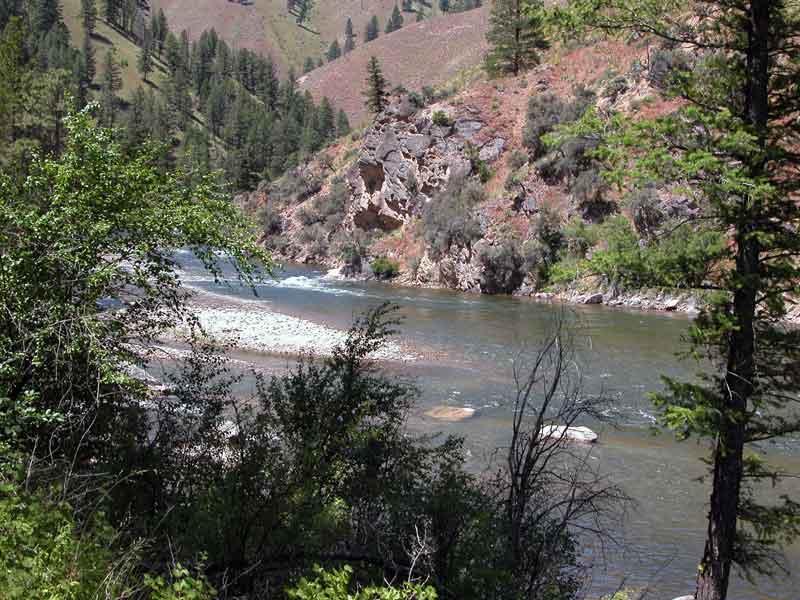
Below: This shot was taken on the hike to Loon Creek. It is a pleasant walk that ends in a hot soak. Just watch out for rattlers!
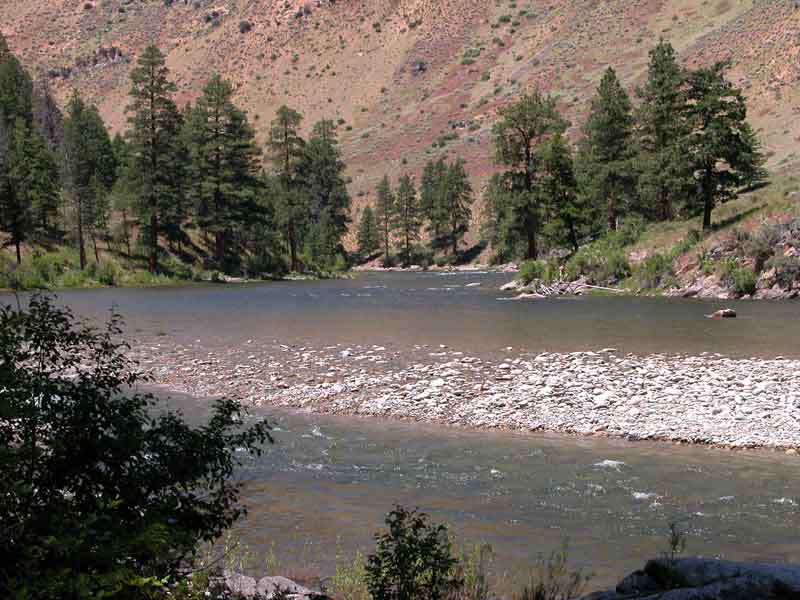
Below: Rocks on the river bottom.
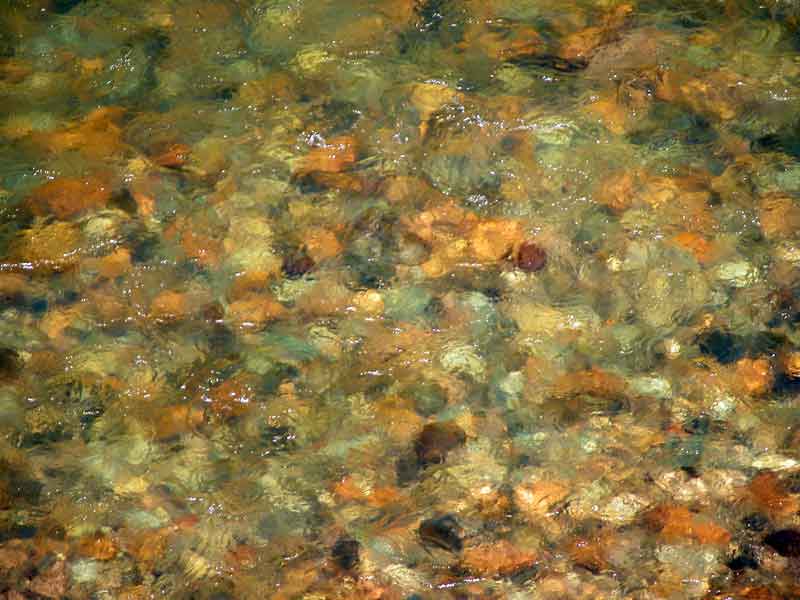
Below: A little wider shot of the same river bottom.
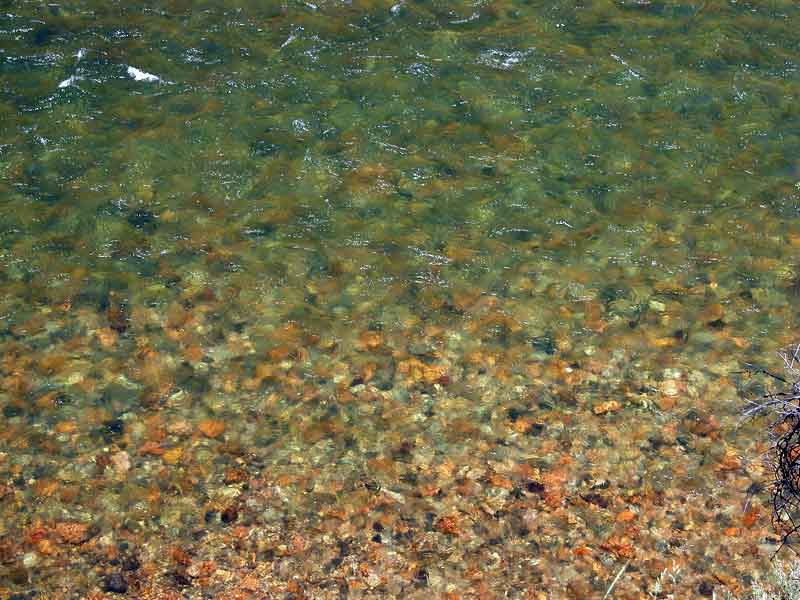
Below: Now the full river. At some places you can see every rock in the river bed.
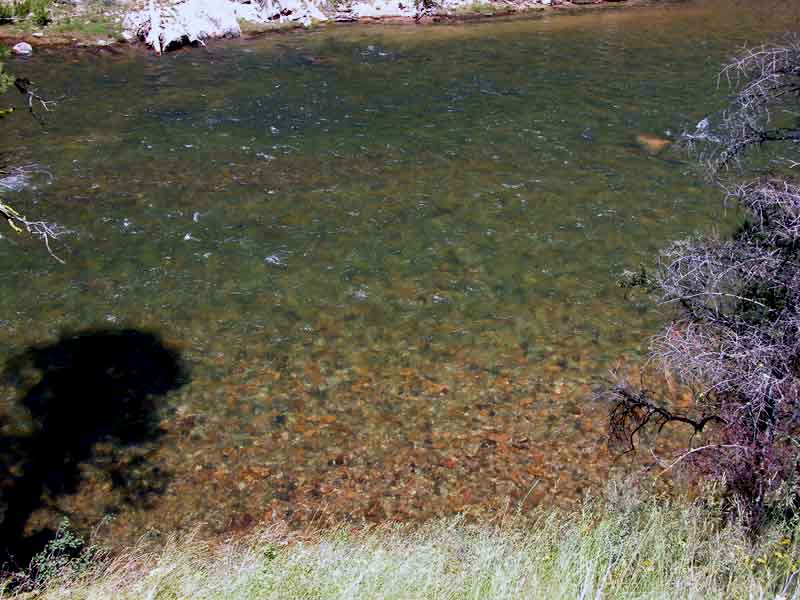
Below: A skinny path for boats in this section of sandbars.
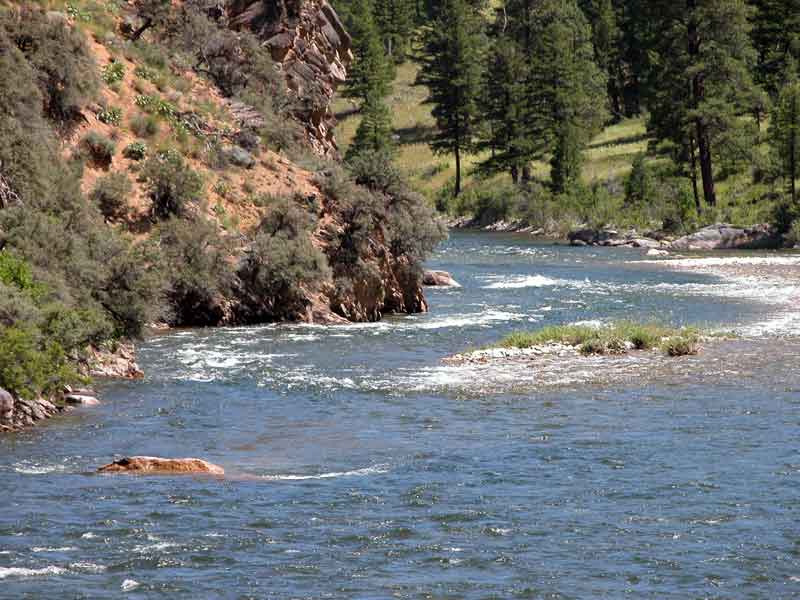
Below: The magnificence of the Idaho batholith. More on this from an educational site.
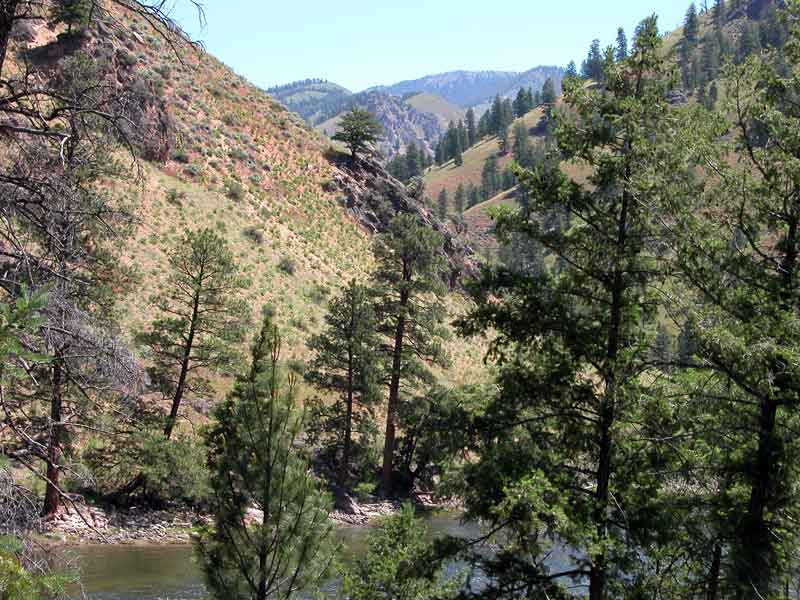
Below: The warm water of Loon Creek Hot Springs. Notice the creek is close enough to do the hot / cold plunge. Check your heart prior to doing this.
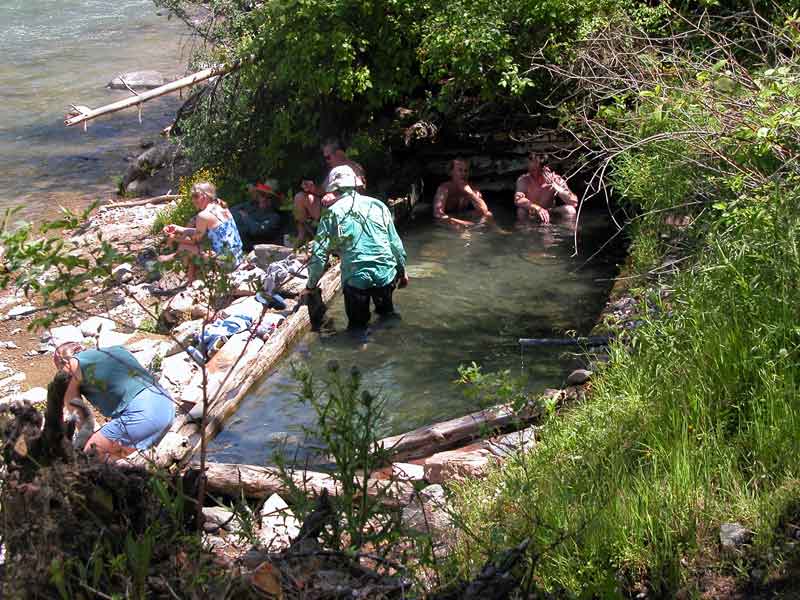
Below: Class III+ Tappan Falls. The drop is about six feet. At this level the big reversal has not formed. This is a safe day to take the plunge.
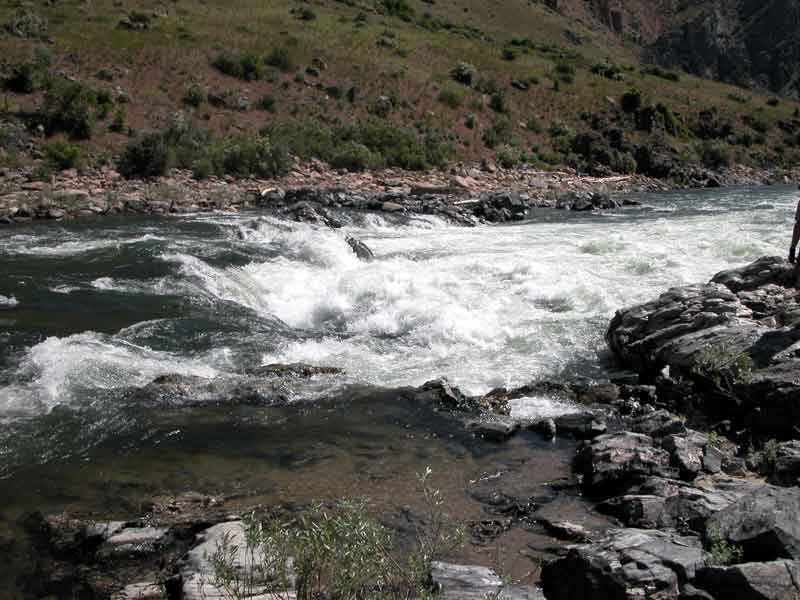
Below: Willy shows us how to do it. This wild man led us for most of the trip.
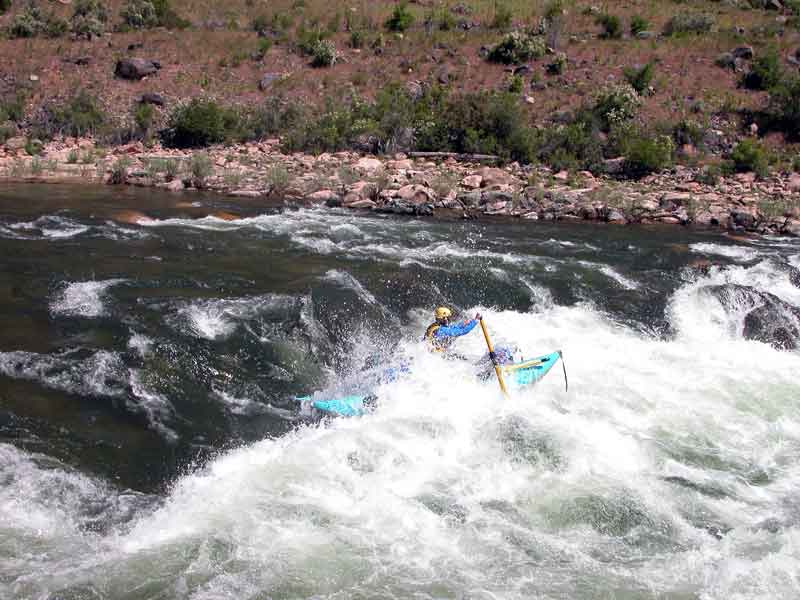
Below: Below class IV Rubber Rapid. Rubber has lateral waves that hit the boat from both sides. You must take these waves head on if you want to keep from flipping. Rubber rapid can easily flip the biggest raft.

Below: A typical shot of the mild sections of this excellent river.
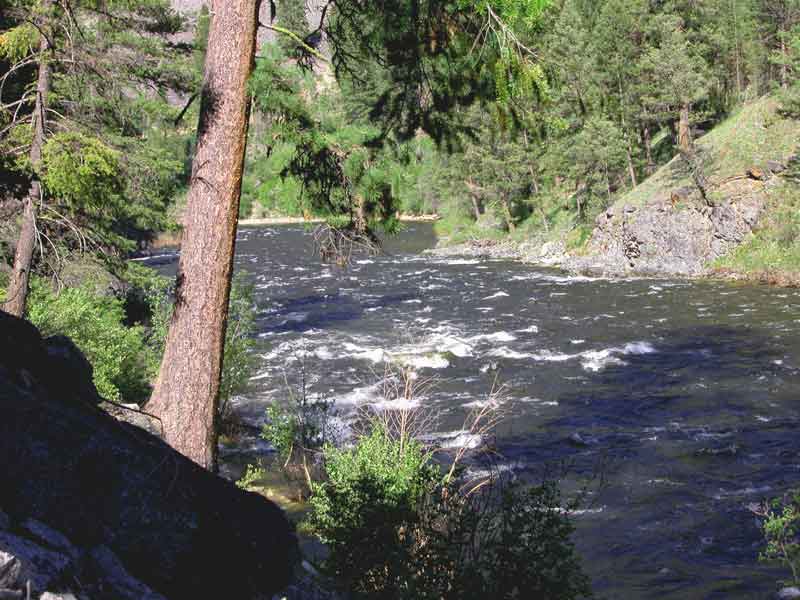
Below: This shot is taken higher up the drainage where the river is smaller and more constricted.
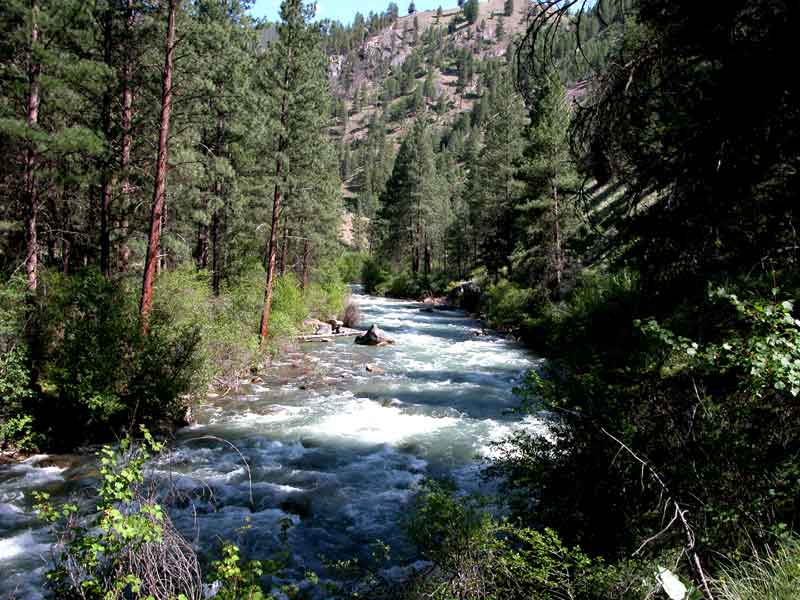
Below: Snake! This looks like a medium sized Bull snake. The drainage contains a fair number of rattlesnakes. So be careful. This would be a terrible place to experience a bite from a poisonous snake. There is no quick way out.
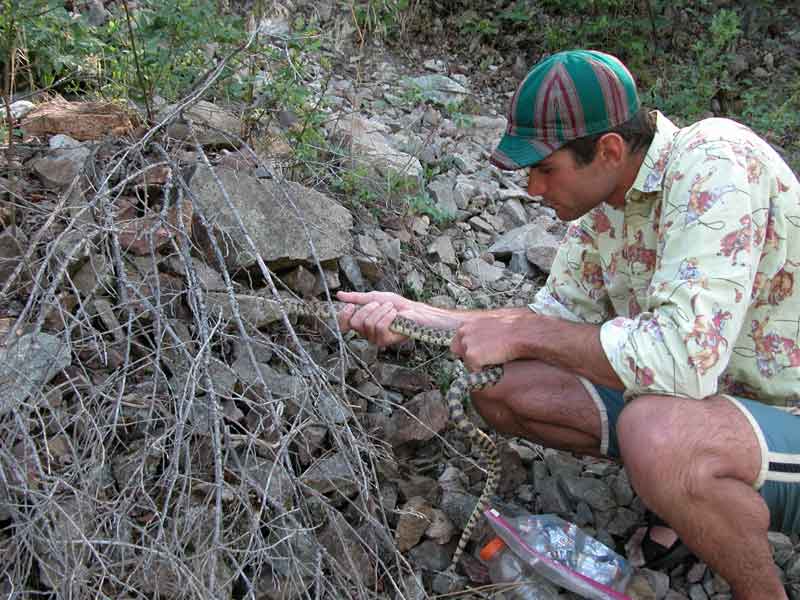
Below: Veil Falls. Two friends of mine decided to marry each other here. The guy proposed here because he thought it was a powerful, romantic spot. Now we stop by every time we float this river. Way to go Dan!
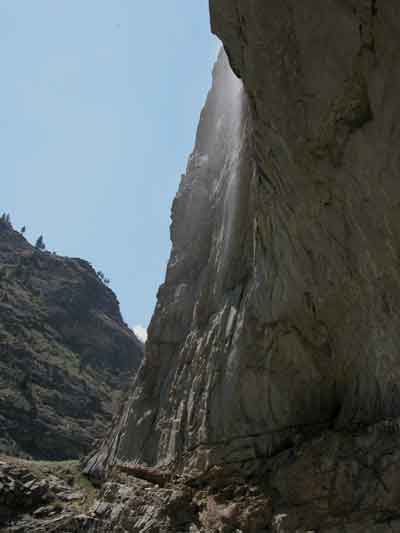
Below: Waterfall Creek Falls. Located about mile 78, these falls are very nice and worth the stop.
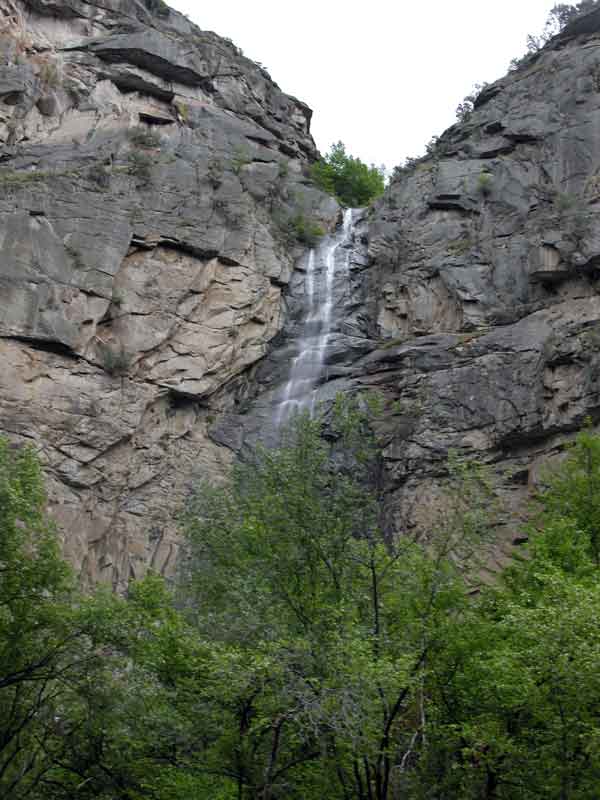
Below: Waterfall Creek Falls. These boats have stopped to take a look.
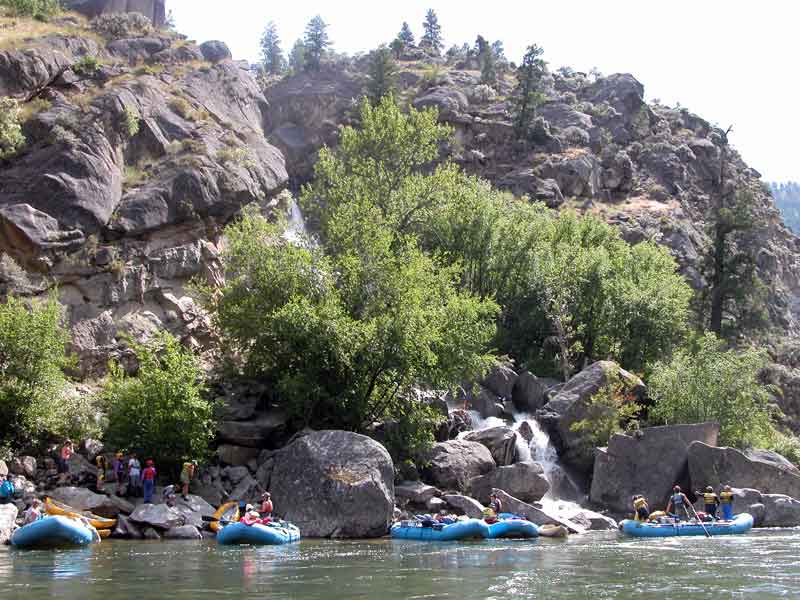
Below: The beginnings of the final gorge. The Impassable Canyon as it is known. Impassable by horse not by boat!
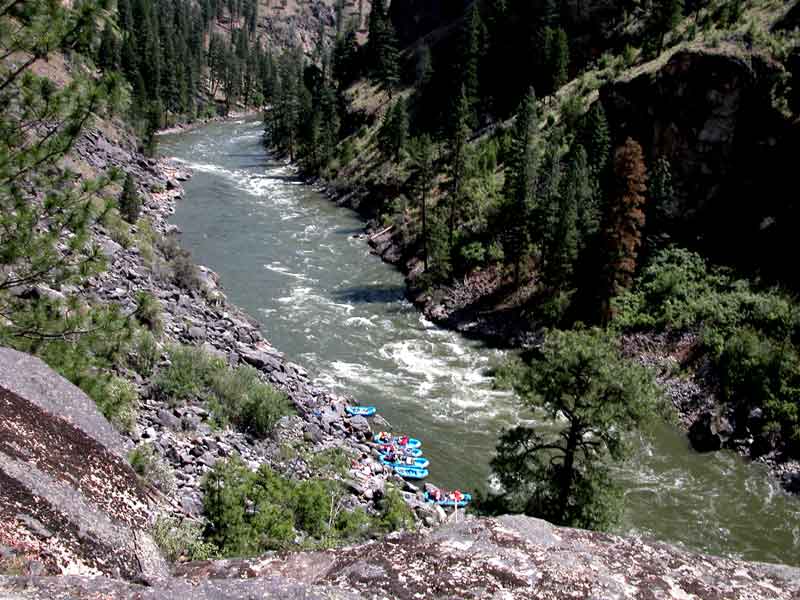
Below: See what I mean?
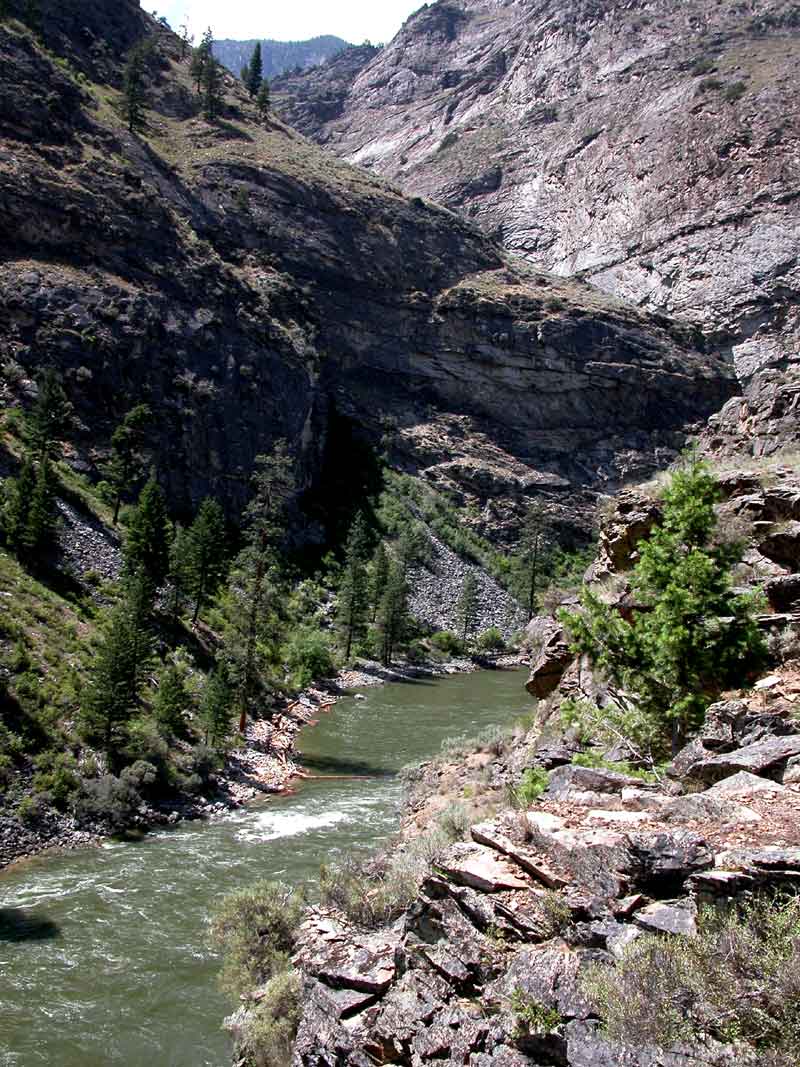
Below: Paul. Photo by Paul.
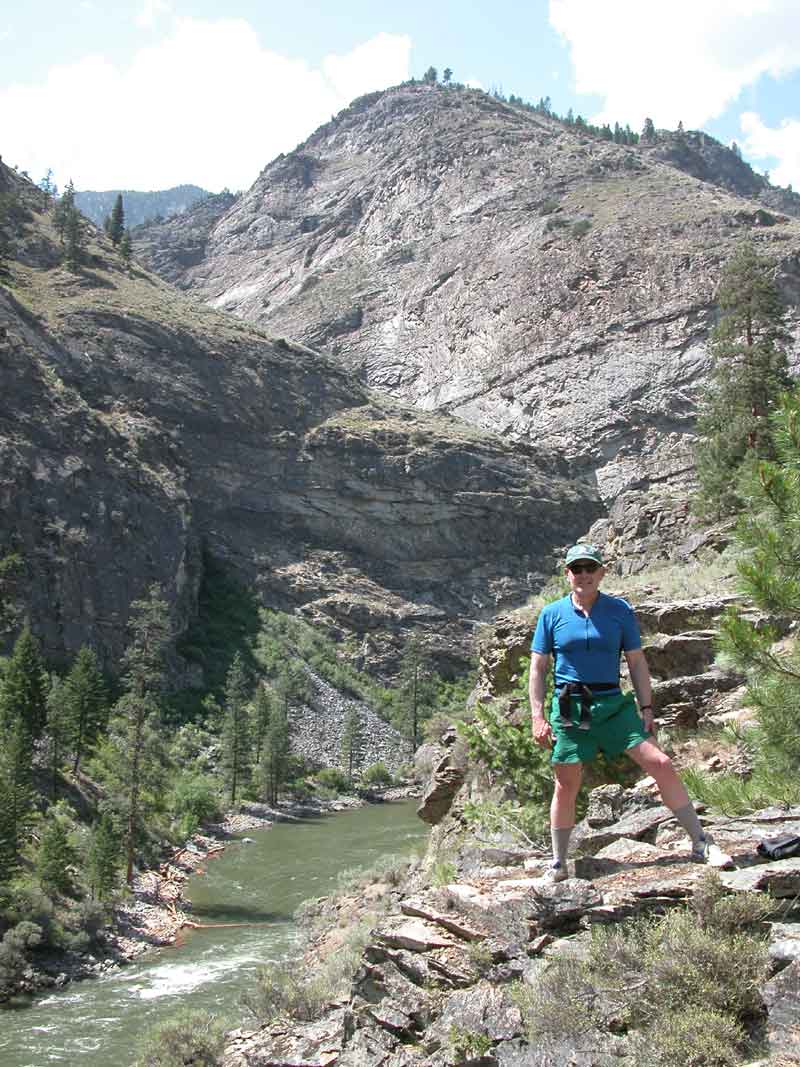
Below: More of the Impassable Canyon. Photo by Paul.
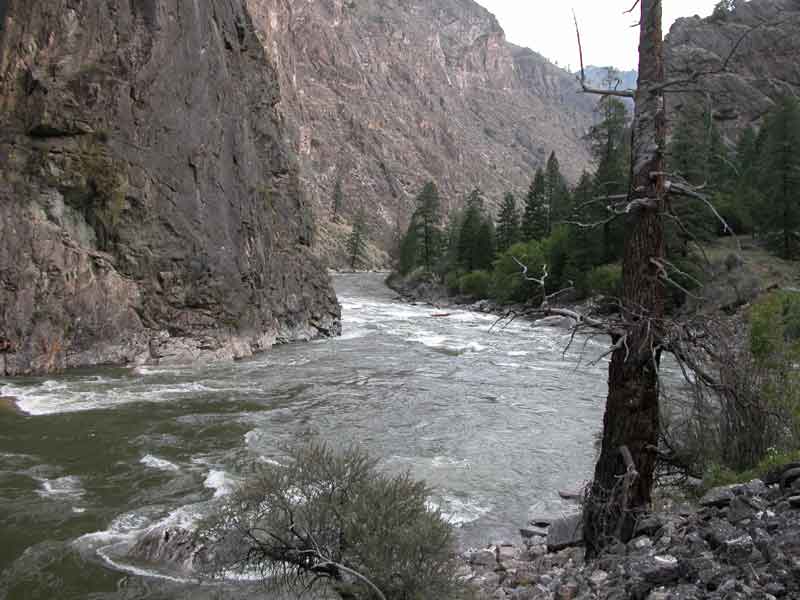
Below: Strainers are one of the most deadly elements you can encounter in a boat. Photo by Paul.
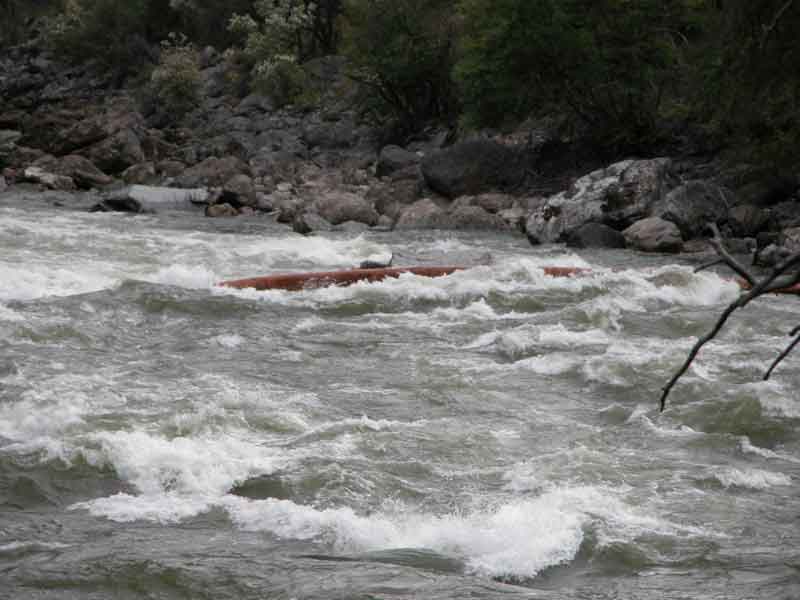
Below: A commercial river runner's camp. The green tents gives it away as a paid trip put on by a commercial outfitter. Photo by Paul.
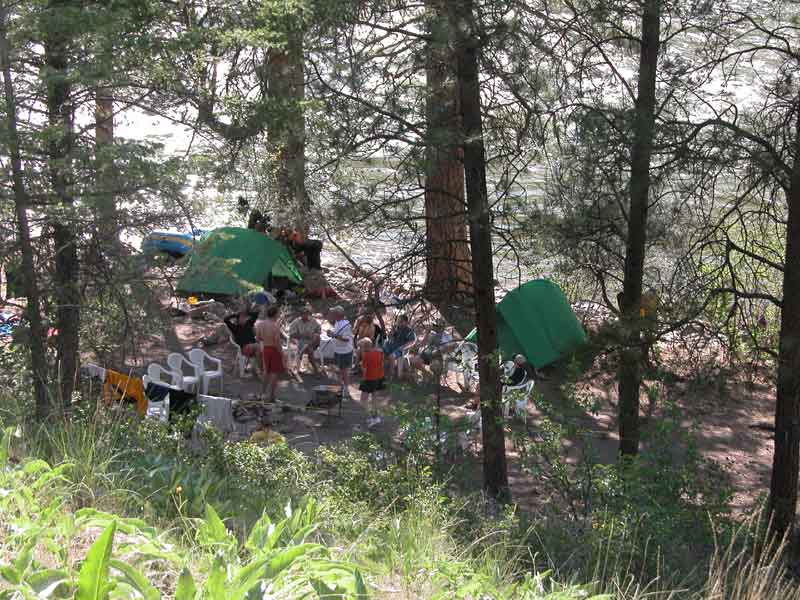
Below: Party time with the group. Photo by Paul.
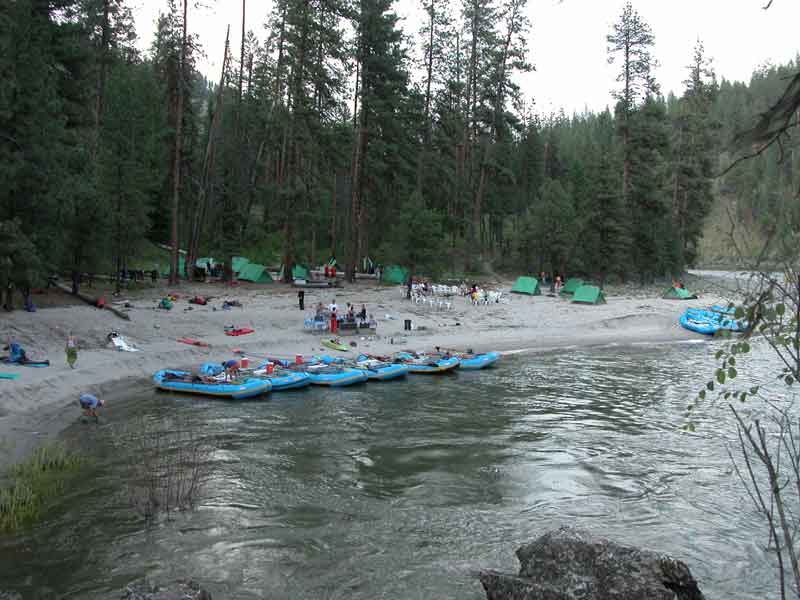
Below: A showoff attempts to impress someone (anyone). Editor's comments: If you see people doing this, choose new people to experience wilderness with. This fun activity has the potential to turn this trip into a struggle of life and death and impact everyone. This is no place for this type of activity and only serves to show you some people will take chances on a river that offers few chances for immediate medical help, should it become necessary. With stunts like this, that may be sooner, rather than later. Do this in your back yard! Photo by Paul.

Below: After 25 miles of this river, you will encounter some quiet spots, but I would not take my hands off the oars for very long. And I would suggest to continue to scan the downstream river.
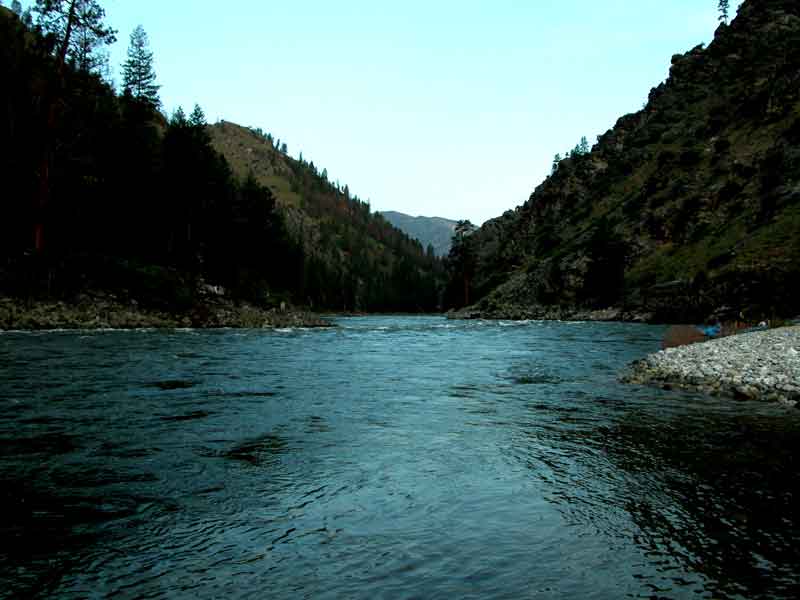
Below: Another nice quiet spot.
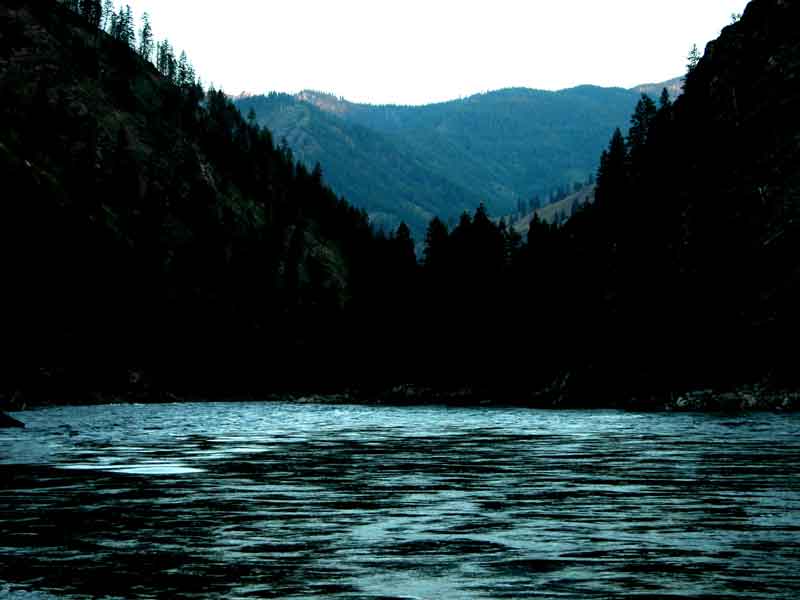
Below: Dan negotiates the final sections of the Middle Fork shortly before it joins with the Main Salmon river.
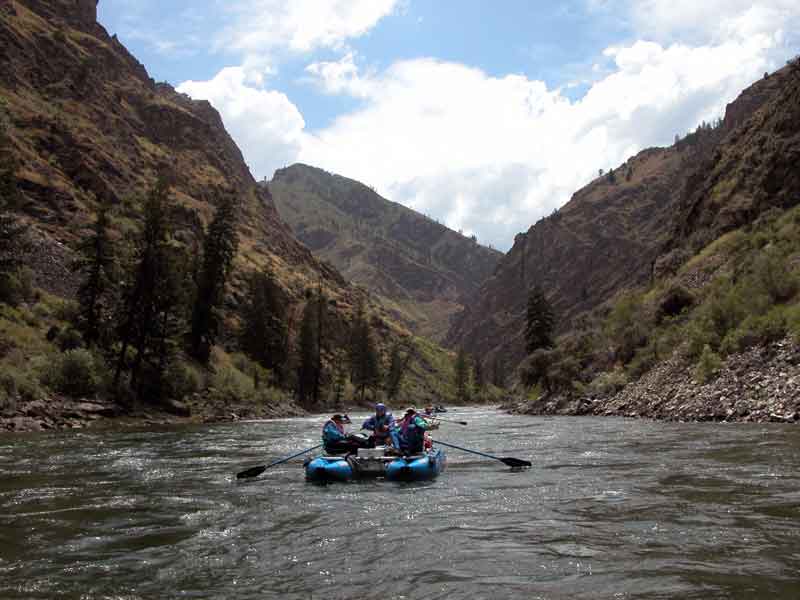
Below: A new rapid forms on the Main Salmon. Crammer Rapid, mile 98 on the Middle Fork float and 2 miles into the Main Salmon from the confluence with the Middle Fork (not sure on the spelling yet, this is a brand new one). This wave is between 15 and 20 feet high. When you get into the actual fold of the rapid, you can see it is much bigger than it looks from the shore. Photo by Willy.
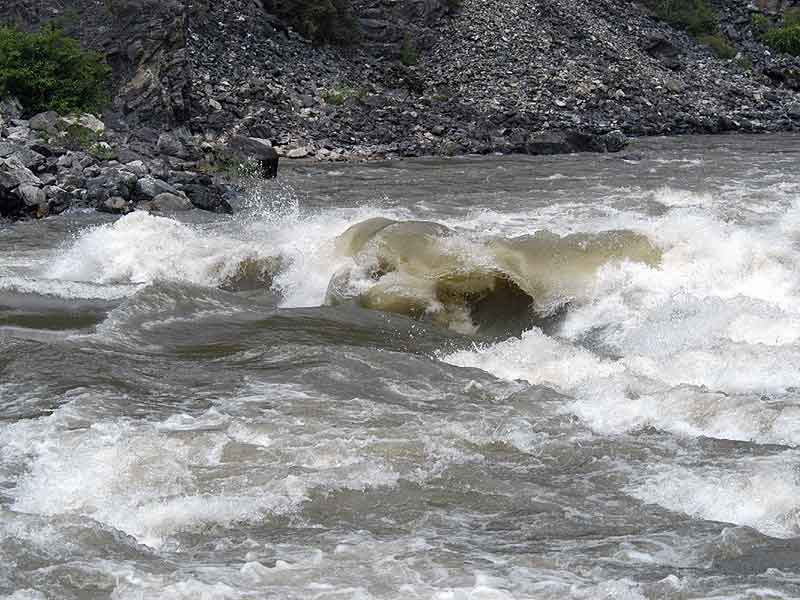
Below: Crammer is a boat flipper. This turned out to be a dump truck. Both passengers were thrown out. This is easily the biggest rapid on the Middle Fork trip and a solid class IV. I have heard it described by a N.P.S. employee as a IV+, but I kind of doubt that. There is very little consequence for flipping in this, although you could get into trouble in a good sized lateral wave on the right side at the bottom. Photo by Willy.
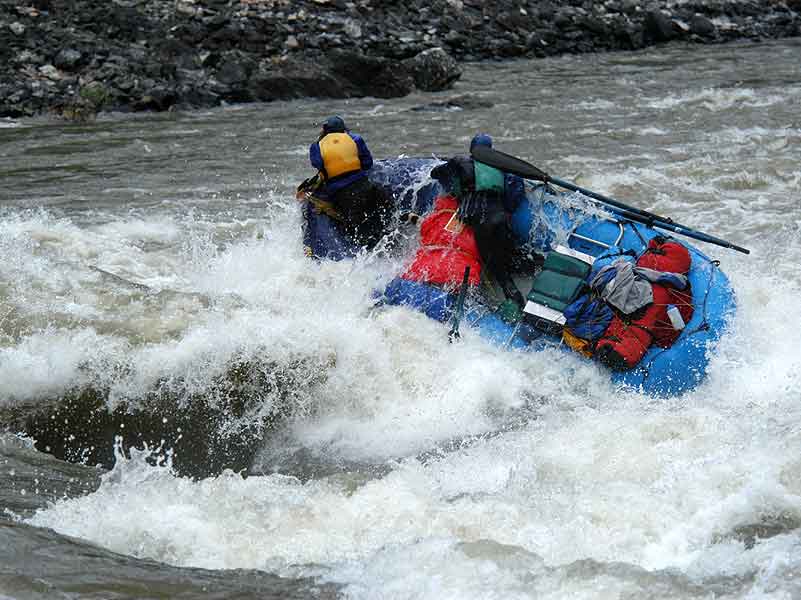
Below: The author with two passengers, Gary D. and Fred (no helmet-go figure). Photo by Willy.
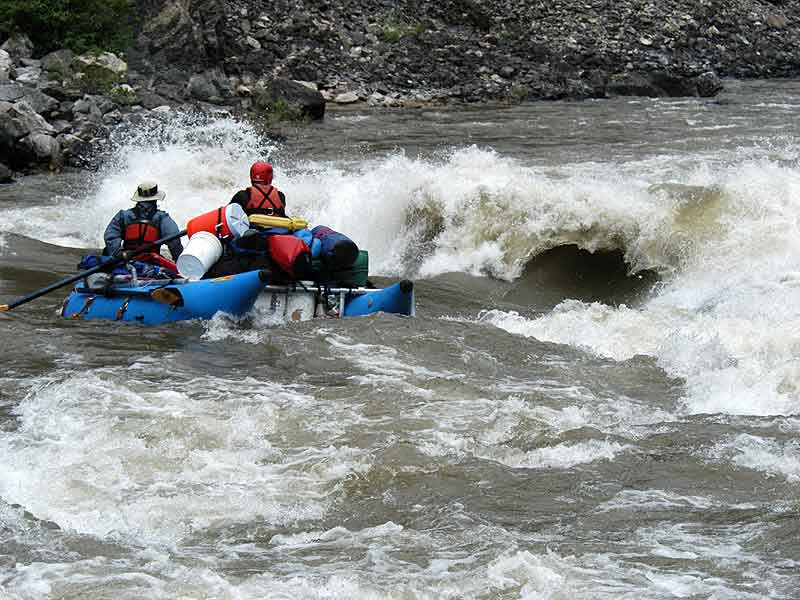
Below: A successful run. Shortly after this photo was taken the left oar was violently ripped out of my hand. Guess I will just use the right one. You cannot tell here but I am about to square up to this wave so as not to get trashed. If I do not, I will surly flip too. Photo by Willy.
